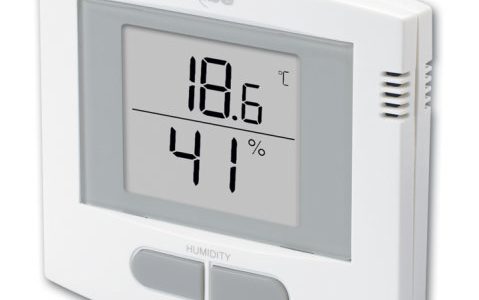How to Manage Indoor Humidity Without a De-humidifier
High indoor humidity is a comfort problem that can soon cause an unhealthy indoor environment. According to the Florida Solar Energy Center, mold and mildew can form over just a few days when conditions are right.
The best indoor relative humidity is 45% to 55%. Unfortunately, most heating and cooling systems are not designed to manage indoor humidity. Home heating and cooling systems are controlled by a thermostat, which uses a thermometer, so indoor humidity control is only an incidental byproduct of the system operation. This is a problem for homes in the south because indoor humidity is often more important than air temperature.
What’s the best strategy for managing indoor humidity? Start by measuring it! You can’t manage what you don’t measure, and indoor relative humidity can be easily measured with an inexpensive humidistat. The ideal indoor relative humidity is between 45% and 55%, but must always be maintained between 40% and 60%.
On cold humid days, like today, in north Alabama, the morning temperature was just above freezing with an outdoor relative humidity of 91%. One way to lower humidity is to raise the air temperature. When the same outdoor air is brought into the home and heated to a comfortable 72 degrees, the relative humidity will be lowered to a comfortable range, between 45% and 55%.
Maintaining low indoor humidity can be difficult, however, because our daily activities add lots of moisture to the air. Cooking, bathing and showering are the biggest sources of indoor moisture. Bath fans and vent hoods are designed to vent the moisture outside the home. People, pets, and the building itself are also significant sources of indoor moisture.
Use the humidistat to evaluate the effectiveness of various moisture management strategies. The best tools are venting, heating and cooling. Your bath fans and kitchen vent fan are very effective if vented outside the home. Unfortunately many kitchen vent hoods only recirculate moisture and cooking odors back into the home. Likewise, bath fans often dump into the attic, which can cause mold.
Second, your heating and cooling system can be manually operated to manage relative humidity based on the readings from your humidistat. If humidity is too high, running the air conditioner will remove moisture at the condenser. This is an important part of summer comfort, because the air conditioner will dehumidify as it cools the air. (Scientists and heating and cooling professionals call humidity “latent heat” and the system is designed to remove moisture and lower air temperature). However, only high-end home heating and cooling systems monitor and actively maintain indoor relative humidity.
You can use your air conditioner during mild weather to manage humidity, even if indoor temperature is the same as outdoors. Remember, we want to remove the “latent heat” of excess moisture. Set your air conditioner thermostat to lower temperature by only a few degrees. It will remove humidity as it operates to cool the air. If it gets too cold, switch on the heat to warm the dry air. (By the way, this is how a dehumidifier works – first cooling air to condense out the moisture, and then reheating the cool, dry air back to room temperature).
Central air conditioners should not be operated when the outdoor air temperature is below 50-65 degrees, depending on the unit. Read the operator’s manual to verify minimum outdoor temperatures for safe operation in cooling mode.
Finally, excessive indoor humidity can be a sign of other moisture source problems. Verify the crawl space has a full vapor barrier with no exposed dirt or standing water. It should also be sealed to the foundation wall. Other sources of excess indoor moisture include leaky roofs, poorly sealed windows, and poor drainage around the foundation of the home.


Comments are closed.